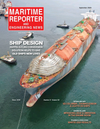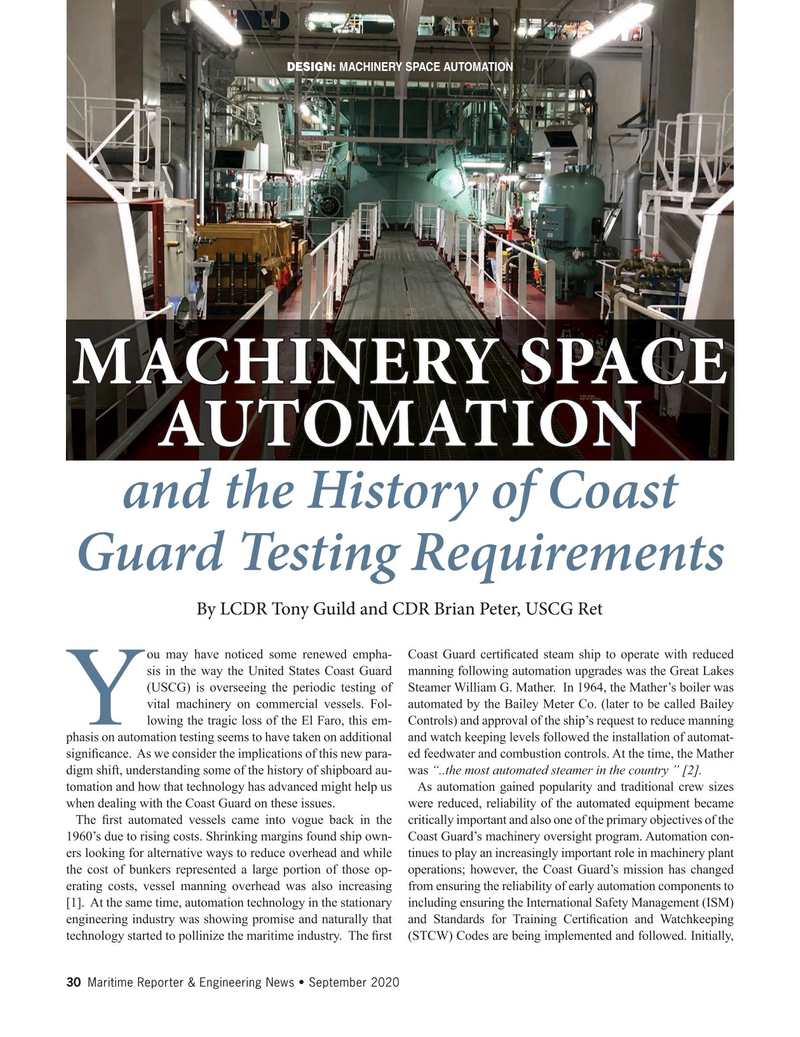
Page 30: of Maritime Reporter Magazine (September 2020)
Marine Design Annual
Read this page in Pdf, Flash or Html5 edition of September 2020 Maritime Reporter Magazine
DESIGN: MACHINERY SPACE AUTOMATION
MACHINERY SPACE
AUTOMATION and the History of Coast
Guard Testing Requirements
By LCDR Tony Guild and CDR Brian Peter, USCG Ret ou may have noticed some renewed empha- Coast Guard certi? cated steam ship to operate with reduced sis in the way the United States Coast Guard manning following automation upgrades was the Great Lakes (USCG) is overseeing the periodic testing of Steamer William G. Mather. In 1964, the Mather’s boiler was vital machinery on commercial vessels. Fol- automated by the Bailey Meter Co. (later to be called Bailey
Ylowing the tragic loss of the El Faro, this em- Controls) and approval of the ship’s request to reduce manning phasis on automation testing seems to have taken on additional and watch keeping levels followed the installation of automat- signi? cance. As we consider the implications of this new para- ed feedwater and combustion controls. At the time, the Mather digm shift, understanding some of the history of shipboard au- was “..the most automated steamer in the country ” [2]. tomation and how that technology has advanced might help us As automation gained popularity and traditional crew sizes when dealing with the Coast Guard on these issues. were reduced, reliability of the automated equipment became
The ? rst automated vessels came into vogue back in the critically important and also one of the primary objectives of the 1960’s due to rising costs. Shrinking margins found ship own- Coast Guard’s machinery oversight program. Automation con- ers looking for alternative ways to reduce overhead and while tinues to play an increasingly important role in machinery plant the cost of bunkers represented a large portion of those op- operations; however, the Coast Guard’s mission has changed erating costs, vessel manning overhead was also increasing from ensuring the reliability of early automation components to [1]. At the same time, automation technology in the stationary including ensuring the International Safety Management (ISM) engineering industry was showing promise and naturally that and Standards for Training Certi? cation and Watchkeeping technology started to pollinize the maritime industry. The ? rst (STCW) Codes are being implemented and followed. Initially, 30 Maritime Reporter & Engineering News • September 2020
MR #9 (18-33).indd 30 9/9/2020 8:19:53 AM

 29
29

 31
31
